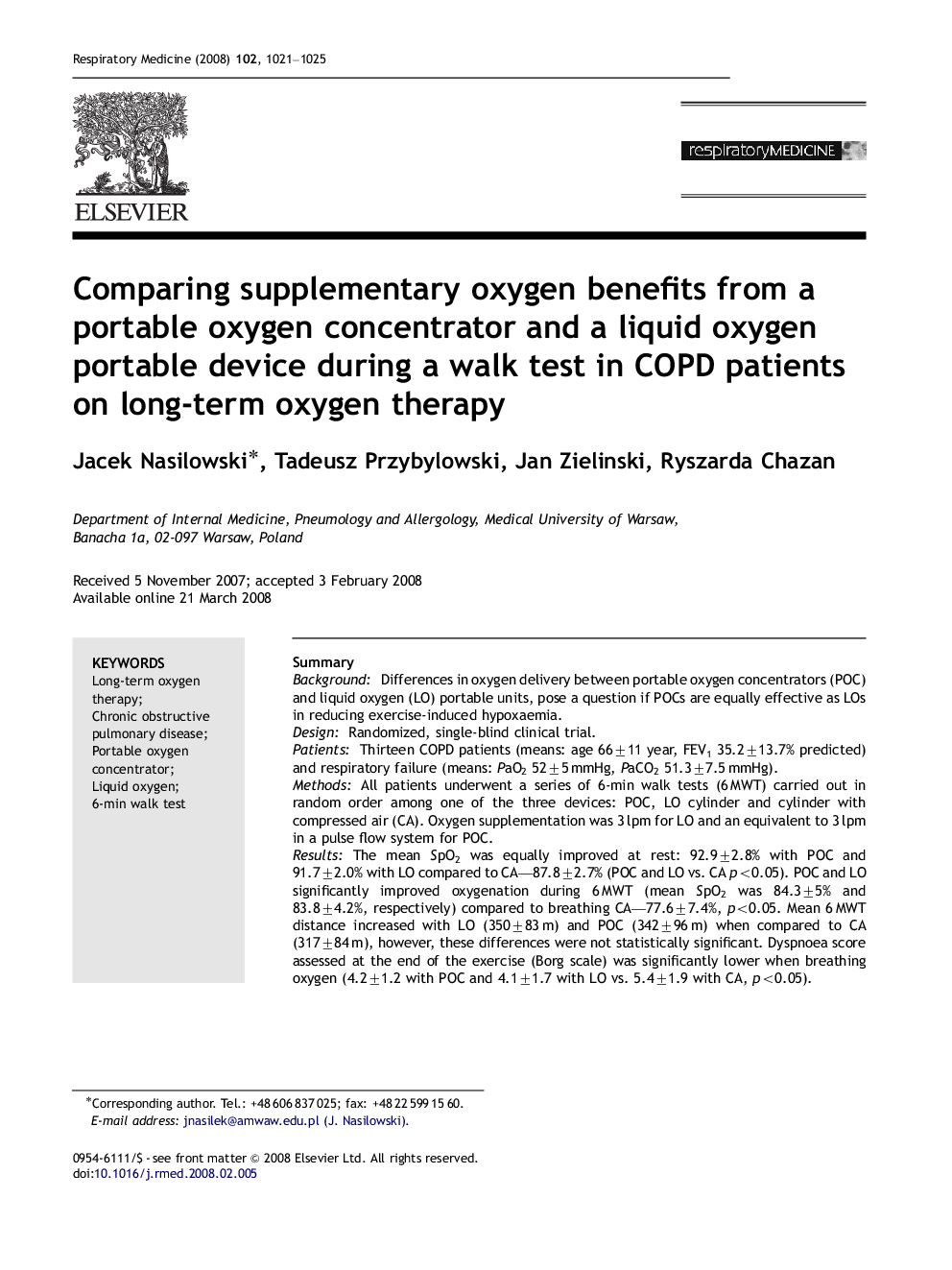| کد مقاله | کد نشریه | سال انتشار | مقاله انگلیسی | نسخه تمام متن |
|---|---|---|---|---|
| 4211320 | 1280634 | 2008 | 5 صفحه PDF | دانلود رایگان |

SummaryBackgroundDifferences in oxygen delivery between portable oxygen concentrators (POC) and liquid oxygen (LO) portable units, pose a question if POCs are equally effective as LOs in reducing exercise-induced hypoxaemia.DesignRandomized, single-blind clinical trial.PatientsThirteen COPD patients (means: age 66±11 year, FEV1 35.2±13.7% predicted) and respiratory failure (means: PaO2 52±5 mmHg, PaCO2 51.3±7.5 mmHg).MethodsAll patients underwent a series of 6-min walk tests (6 MWT) carried out in random order among one of the three devices: POC, LO cylinder and cylinder with compressed air (CA). Oxygen supplementation was 3 lpm for LO and an equivalent to 3 lpm in a pulse flow system for POC.ResultsThe mean SpO2 was equally improved at rest: 92.9±2.8% with POC and 91.7±2.0% with LO compared to CA—87.8±2.7% (POC and LO vs. CA p<0.05). POC and LO significantly improved oxygenation during 6 MWT (mean SpO2 was 84.3±5% and 83.8±4.2%, respectively) compared to breathing CA—77.6±7.4%, p<0.05. Mean 6 MWT distance increased with LO (350±83 m) and POC (342±96 m) when compared to CA (317±84 m), however, these differences were not statistically significant. Dyspnoea score assessed at the end of the exercise (Borg scale) was significantly lower when breathing oxygen (4.2±1.2 with POC and 4.1±1.7 with LO vs. 5.4±1.9 with CA, p<0.05).ConclusionsEffectiveness of oxygen supplementation from a POC did not differ from the LO source during 6 MWT in COPD patients with respiratory failure. Oxygen at 3 lpm flow was not sufficient to prevent hypoxaemia during strenuous exercise.
Journal: Respiratory Medicine - Volume 102, Issue 7, July 2008, Pages 1021–1025